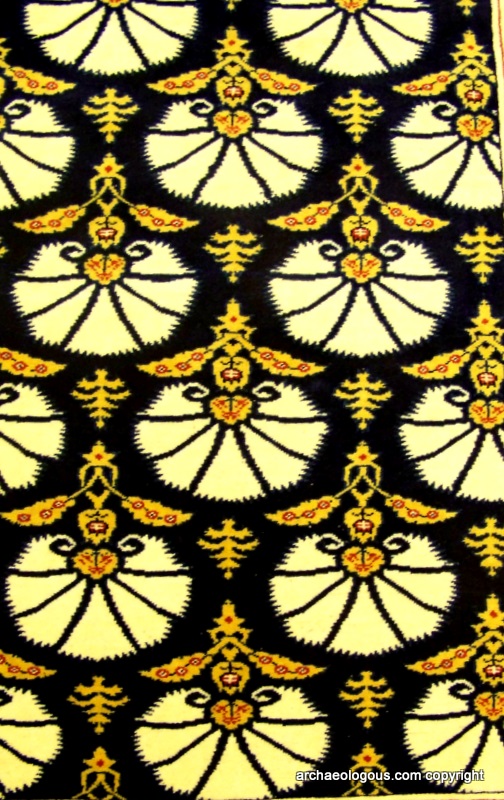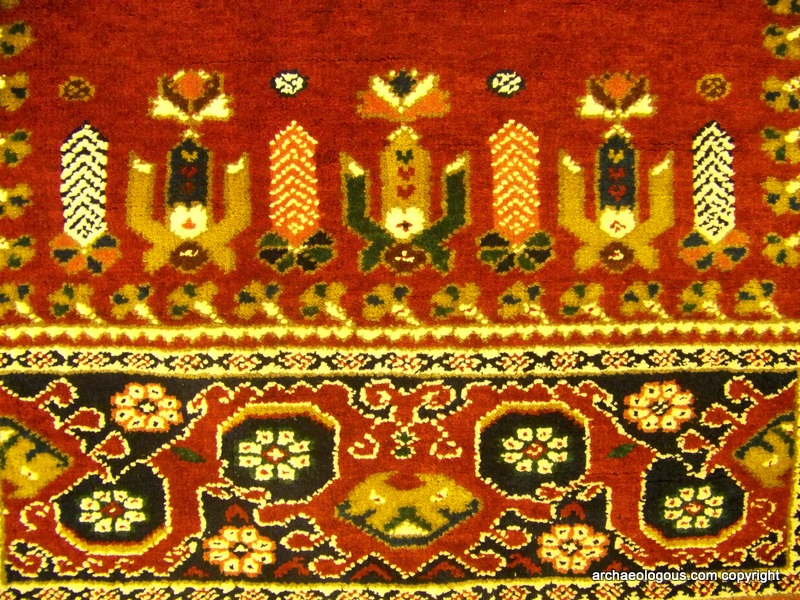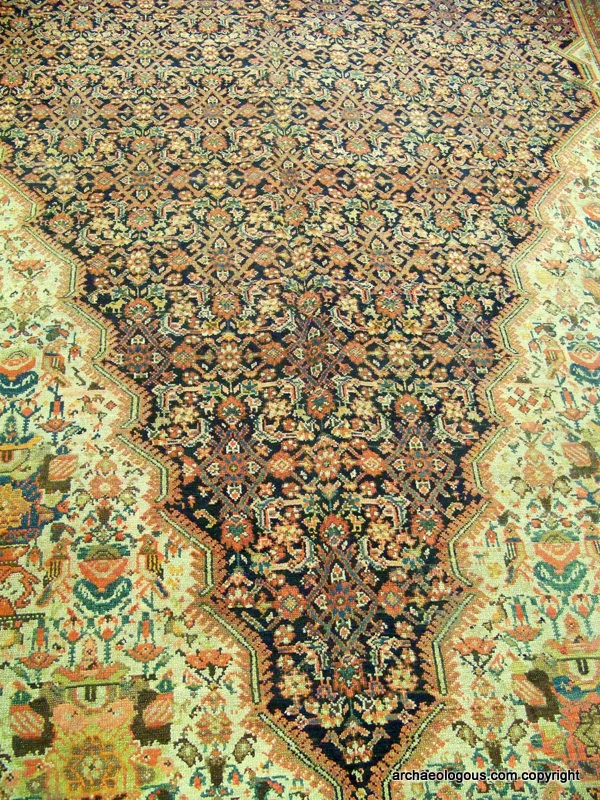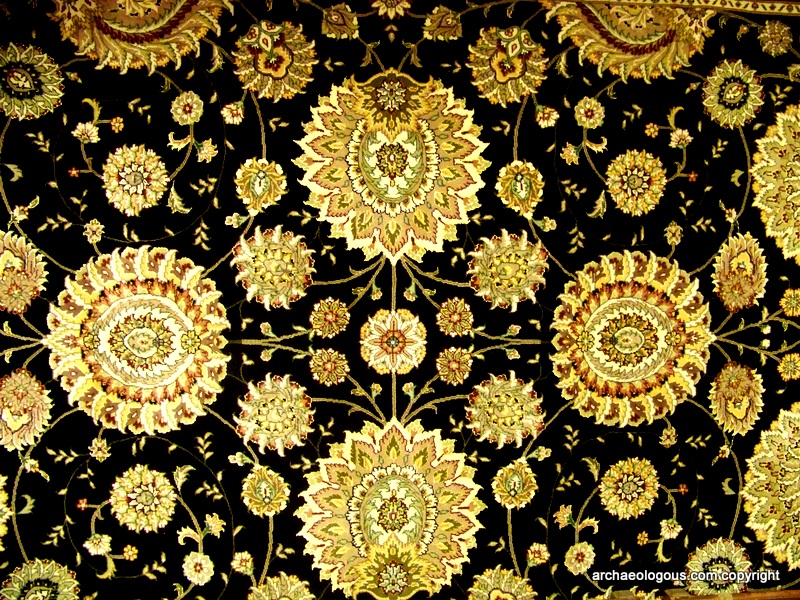History of Turkish carpets- info by Archaeologous
History of the exquisite Turkish double knotted carpets
No one knows exactly when or where the first knotted-pile carpets were woven but overwhelmingly, there is no doubt that the art of weaving started in Central Asia due to the migration of the nomads migrating to the western parts of Asia from the plains of Siberia. The first creations were actually made of goat hair in the making of their tents for protection against severe weather conditions. This was the start of the flat weave technique. Later leading to the use of these “kilms” as room dividers, cradles, sleeping blankets etc.
The oldest “surviving” pile carpet was discovered in the grave of Scythian prince in Siberia’s Pazyryk valley in l947. It has the Turkish double knot and contains a stupendous 347,000 knots per square meter—in case you are counting that’s: (255 per square inch ). If you are traveling to Russia you may see this treasure, dated back to the 5th century B.C., in the Hermitage Museum in Leningrad. It is a sophisticated carpet and being in the grave of an aristocrat, it shows that already 2500 years ago that gorgeous carpets were a treasure fit for royalty.
The famous Selcuk (Ephesus) Empire, home to the ancient wonders of Ephesus, the House of Mother Mary, and the St John ’s Basilica that one can visit today, was ruled by the Turks who had reigned in Persia/Iran for centuries. They brought the art of weaving with them and introduced it to the Anatolia region at the end of the 11th century. There are 18 known carpets still existing from this time (the 13 and 14th centuries). If interested one can see these carpets in the Meylana Museum in Konya and Kier collection in London.
Several Turkish tribes in the 14th century, during the Ottoman reign, settled down and built villages and small towns. Hereke was one of these towns and was built only 60 km. from Istanbul. It is now in the history books as it was the first “court” carpet workshop. This is where the Sultans requested extremely exquisite large carpets for the Ottoman palaces, and were also used as diplomatic gifts to other European countries.
By the beginning of the 16th century, most all European royalty owned a private Turkish collection. Not until around 1671, after the kings and queens of Europe began to open their castles to visitation by their subjects, were regular people able to know of the rugs and the demand increased for the double knotted Turkish carpets.
By the 1800’s the Turkish carpets from Hereke, Selcuk and Bergama (Pergamon), had become well known as they were/are unbelievably rich in symbols, color and design. Today Anatolia rugs are woven in more than 750 villages, such as the popular Hali village 5 minutes from Ephesus. What is interesting in that each rug differs as these characteristics of symbols, design and colors are passed on from mother to daughter over the centuries.






